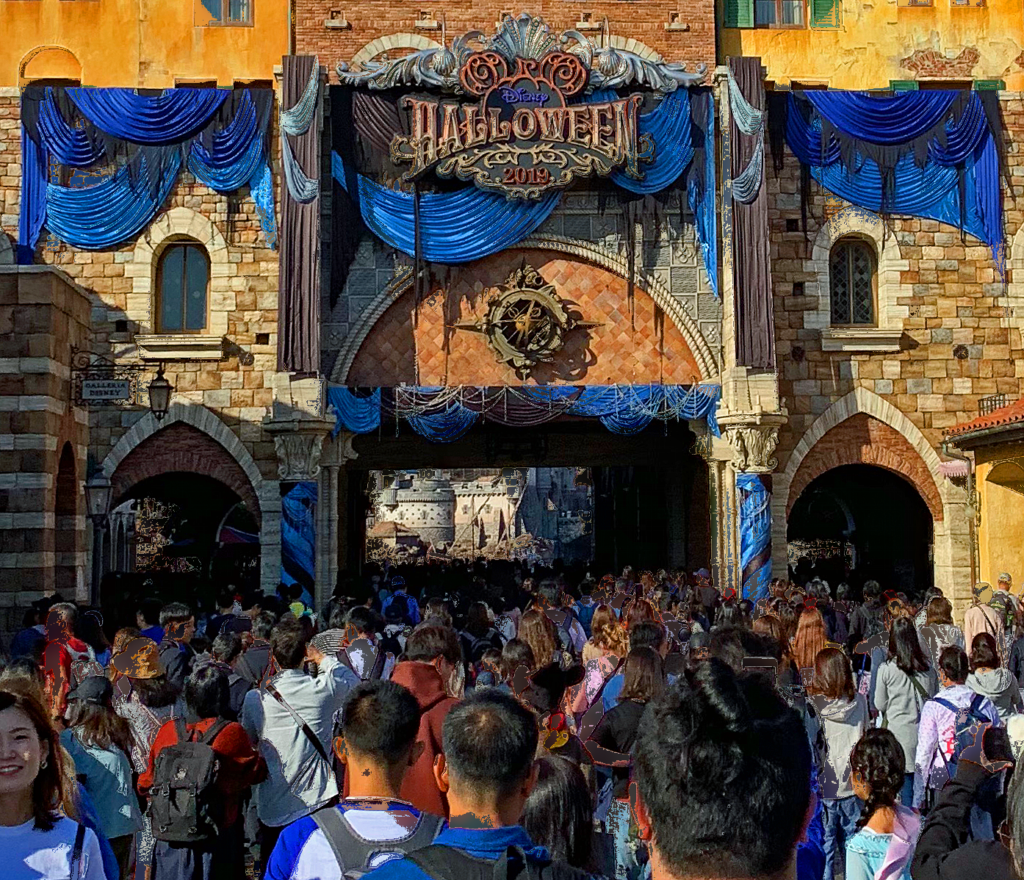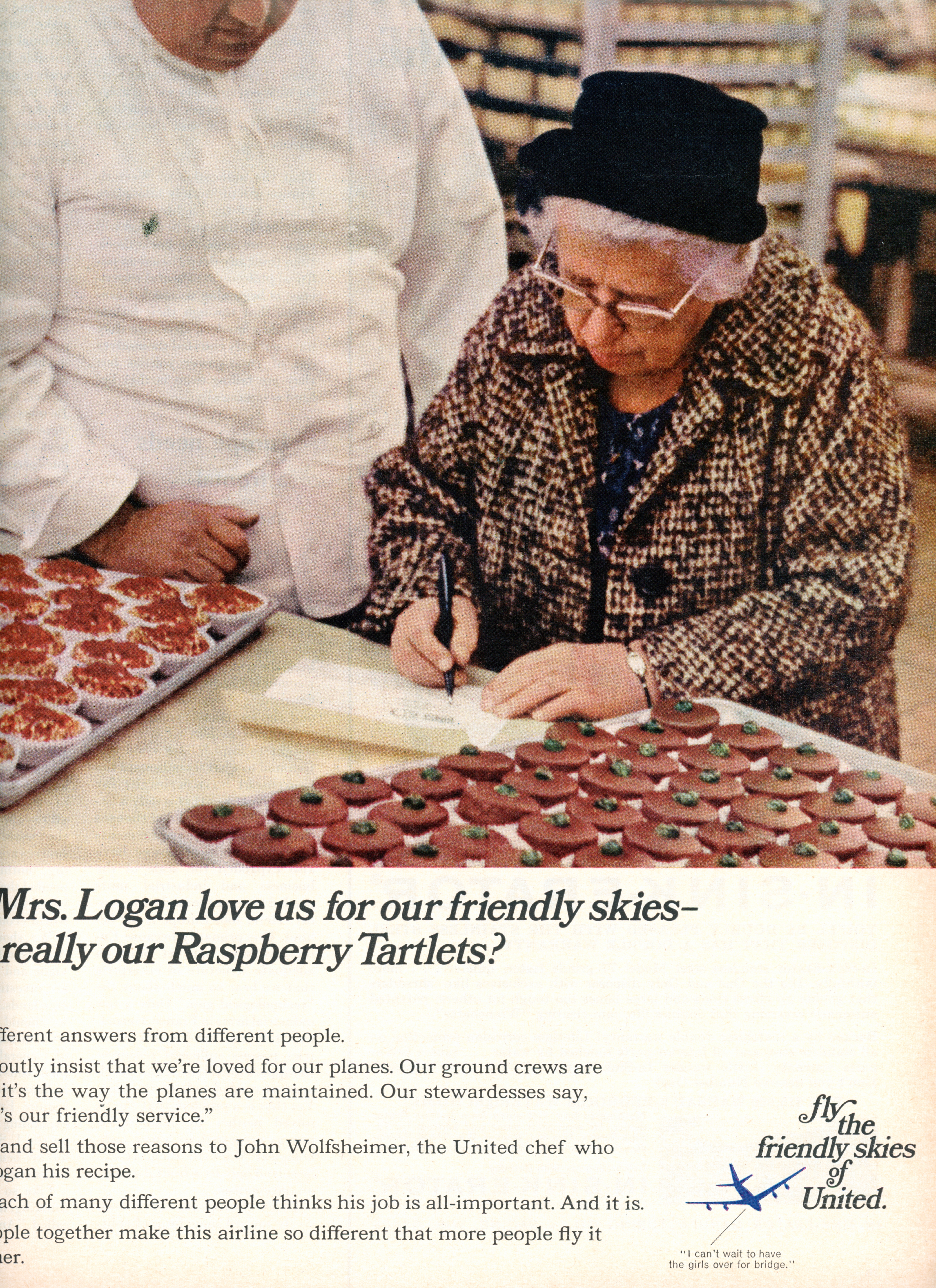You have long been a Disney fanatic, but not in the way others may think. Yes, you grew up with some appreciation for Walt’s classic animation, for the company’s expansion—via Pixar—into 3D-rendered films. But it was never those characters that had you smitten. No, not even Anton Ego—that food critic from Ratatouille whom you are quite tired of being compared to.
“Disney,” to you, has always been shorthand for the theme park. (The theme park—that means Disney World, not the decaying dump over in Anaheim). Yes, Orlando—as you knew it during your childhood—was a world unto itself. (“Orlando,” too, being but another shorthand—in your mind—for Disney World).
You suppose what you are trying to say is that Disney World’s sense of immersion—its sense of “magic,” as Walt termed it—was so convincing, so encompassing as to define your perception of the entire company and the city in which its theme park resides. Of course, Orlando is called the “Theme Park Capital of the World” for good reason. But who really considers Universal Orlando as anything more than a blemish on the visage of the “Most Magical Place on Earth”?
Disney World, beyond amalgamating the full gamut of the media conglomerate’s many properties, stands as the immersive hospitality experience par excellence. The theme park embodies something more than the sum of its attractions; it is a marvel of world-building—of “Imagineering” as the company terms it.

Once guests pass through the pearly gates into Bay Lake, Florida—Mickey’s territory—that famous mouse and his phalanx of employees do not allow for a single false moment. From the bus drivers to the bellhops, the servers to the well-disguised security guards, and—most importantly—the “cast members” themselves, Disney demands that nobody’s bubble get burst. For we all know what would happen if a kid were to see Daffy or Pluto lose their “head,” but what stops mom and dad from losing their minds as they manage long lines in the sweltering sun?
Underneath the glitz and glamour of their media empire, Disney has quietly devoted themselves to defining and mastering the art of hospitality at a theoretical, replicable level. Working for Mickey, as some readers might already know, is a rather competitive process. Applicants are not only fighting to earn a place in Fantasyland (so to speak), but the experience they develop during their time with the company stands as something of a gold standard within the industry. At the very least, working at Disney parks places employees in a peer group with workers at the most renowned restaurants and exclusive resorts in the world.
This is all the more impressive given the relative breadth of Disney’s customer base (compared, say, to servicing only the demographic of “luxury consumers” who patronize Michelin-rated restaurants).
In the 2011 edition of the Disney Institute’s Be Our Guest: Perfecting the Art of Customer Service, author Theodore Kinni explores the foundations of the company’s success. To make things succinct, the cornerstone of Disney’s hospitality is what they term “Quality Service,” defined as “exceeding your guests’ expectations by paying attention to every detail of the delivery of your products and services.” Achieving “Quality Service” demands calibrating four points on a “Quality Service Compass,” which comprises “Guestology,” “Quality Standards,” “Delivery Systems,” and “Integration.”
Guestology
“Guestology” refers to “the art and science of knowing and understanding customers.” From that knowledge, Disney hones in on the nature of guests’ expectations—the baseline from which they can be exceeded. With regard to theme parks like Disney World, the company does not seek to offer the “least expensive” or the “fastest” service. Rather, the focus is on “high-quality entertainment” and, ultimately, “happiness.”
Cast members and management rally around a common purpose: “at Disney, we try to create happiness for people of all ages everywhere.” Put so plainly, such a mission statement empowers a wide-ranging freedom and holistic marshalling of resources in service of guests. Under such a paradigm, creative solutions are less handicapped by economic concerns. And employees, untethered from such quotidian concerns, can dream the kind of dreams and weave the sort of magic that strikes straight through to the guest’s soul.
Quality Standards
“Quality Standards,” also known as “service values,” refer to the operational criteria that “ensure the consistent delivery” of Disney’s common purpose of creating happiness. They are comprised of four hierarchical elements that act as a “set of filters that help Disney employees to judge and prioritize the actions that contribute to the guest experience.”
The most important of these elements is “safety”—since guests who feel insecure about their well-being within the park and on its rides will almost certainly be unhappy. Once safety is assured, the next area of focus is “courtesy.” That means treating customers “the way that they want to be treated, with recognition and respect for their emotions, abilities, and cultures.” It also means, for cast members, “taking a proactive approach to courtesy by anticipating and reaching out to assist and engage Disney’s guests.”

The third element of the company’s “Quality Standards,” built atop “safety” and “courtesy,” is termed “show.” This value “requires that there be seamless and exceptional entertainment for guests” by ensuring “a performance that is uninterrupted from the beginning to the end of a guest’s stay.” That means every detail—“from the landscape to the lamps”—must support the narrative Disney is weaving. For employees, “jobs are performances; uniforms are costumes.”
The last element of “Quality Standards,” “efficiency,” enables guests to make the most of their time at the parks. For example, the company studies “guest flow and usage patterns” throughout its parks to decide on staffing levels and the quantity of products and services to offer. They also design “buses, boats, Monorails and Disney-designed Omnimovers…[to] keep guests moving in the most efficient manner possible.” This efficiency not only maximizes the value customers’ derive from their tickets, but also, of course, “enhances Disney’s profits.”
While none of these four service values are out of the ordinary when it comes to hospitality, their hierarchical nature is key. Safety takes precedent over courtesy, which forms the baseline upon which cast members put on the “show.” Efficiency—being, in essence, more of an economic value—is only stressed once more interpersonal elements of the experience are achieved.
Delivery Systems
With a “Guestology”-derived common purpose and set of “Quality Standards” in place, Disney’s third area of focus encompasses the “Delivery Systems” that enact the company’s vision.
The first of these “Delivery Systems” is the “cast”—the employees that “are on the front lines, face-to-face with customers.” Cast members are inducted into “location-specific performance cultures,” which provide “a set of behaviors, mannerisms, terms, and values” that orient their performance within the boundaries of their work. This “performance culture” is used to direct employee skill-building as well as provide “a baseline for evaluation and improvement.”
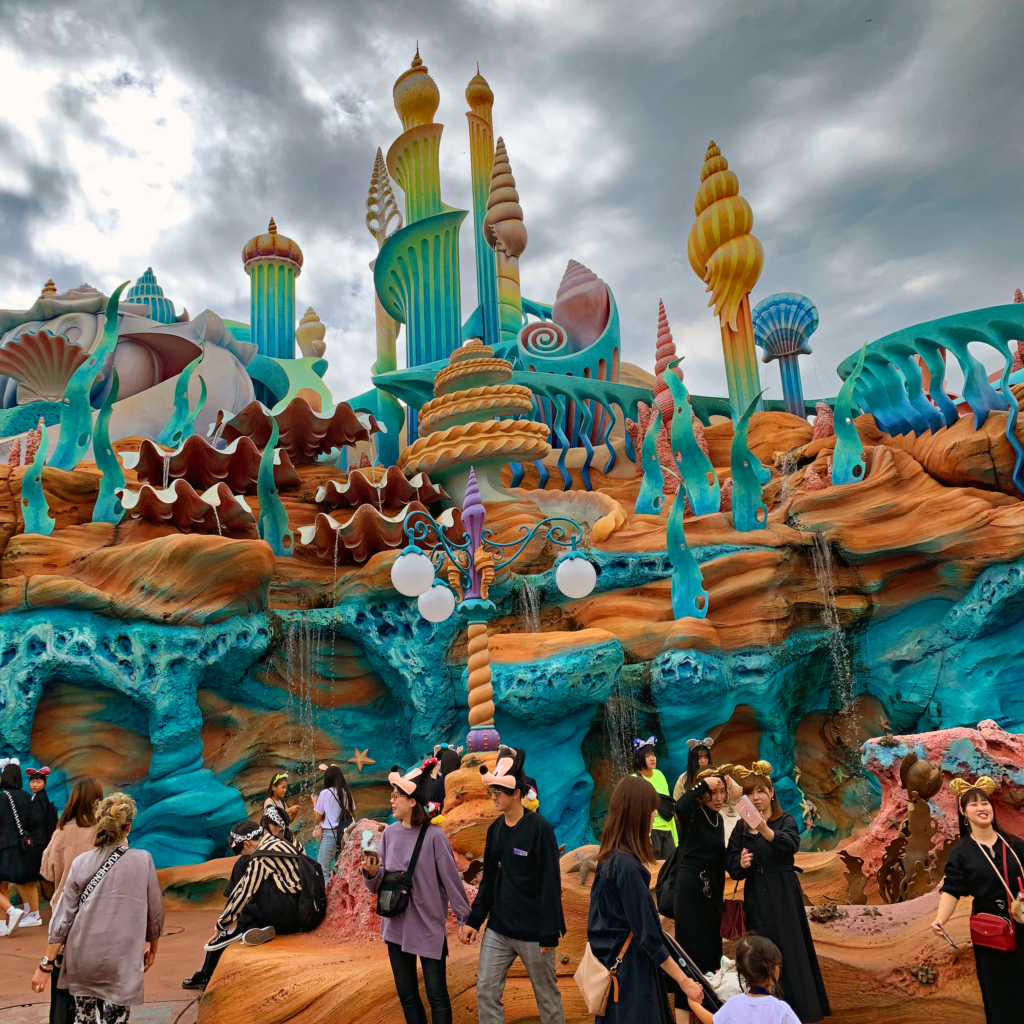
The second “Delivery System” used by Disney is their “setting.” In designing their parks, the company subscribes to the motto “everything speaks.” That means “that every detail—from the doorknobs to the dining rooms—sends a message to guests” and “that message must be consistent with the common purpose and quality standards” to “support and further the show being created.” One famous example is the changing of the texture of the pavement as guests move from one area to another at Disneyland because, as Walt himself explained, “you can get information about a changing environment through the soles of your feet.”
The final “Delivery System” is “process,” which refers to service processes such as hotel check-in/checkout, moving guests through attractions, and emergency response. These processes link the cast, the setting, and the guests together in a streamlined way. However, when such processes break down, they can easily ruin the customer experience. For this reason, Disney constantly debugs its processes to solve problems before they appear. When the company noticed that guests often forgot where they parked their car upon leaving the park, they began instructing the morning parking staff to routinely note which row of spots they worked at which time. By transferring this information to the staff working at the end of the day, guests—who were better able to remember their general arrival time—could more accurately pinpoint their car’s location.
Integration
The last foundation of “Quality Service” comes about by aligning each of the three aforementioned “Delivery Systems” so that they form “a complete operating system.” By merging cast, setting, and process “in pursuit of the service strategy,” Disney can deliver “an exceptionally high-quality guest experience” that “drives the success” of the many dimensions of its business.
While, theoretically, Disney’s “Quality Service Compass” comes across as a bunch of corporate jargon, the company’s unrivaled success at delivering an exceptional hospitality experience speaks for itself. The quality of their parks drives patrons—across all ages and income levels—to spend hundreds, if not thousands, of dollars on their magical getaways. Guests can stay at the Lake Buena Vista Best Western or splurge on a deluxe hotel like the Grand Floridian while still enjoying, more or less, the same quality experience once they step into the theme park.
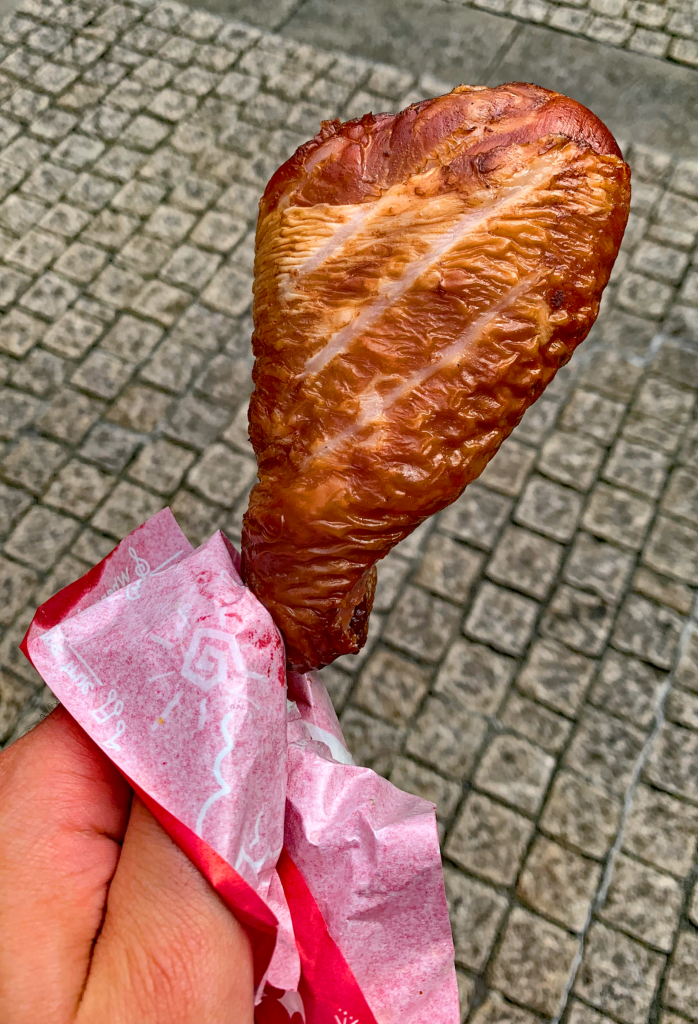
Likewise, guests can plan their meals off property, sign up for a flat-rate Disney Dining Plan, or indulge in tasting menus at Victoria & Albert’s. They can help themselves to free water, order one of countless themed cocktails, or choose a coveted bottle from Master Sommelier George Miliotes’s wine bar in Disney Springs.
The array of quality options—across all levels—offered by Disney is dizzying. And you would wager that the writers of “Disney Guides” and the producers of associated video content are among America’s most discriminating food writers, faced with a task just as daunting as that of Michelin.
It was while consuming this sort of exhaustive content from Disney Food Blog that inspiration for the present article struck. In a YouTube video ranking the top restaurants among Epcot’s diverse range of pavilions, site founder AJ Wolfe coined the term the “Mickey Mouse factor.” It refers to the phenomenon in which children who are picky eaters at home are willing to try all sorts of new foods within the theme park. Such a shift in attitude—an inversion of food phobias that can sometimes take a lifetime to shed—is undoubtedly a consequence of Disney’s masterful world-building.
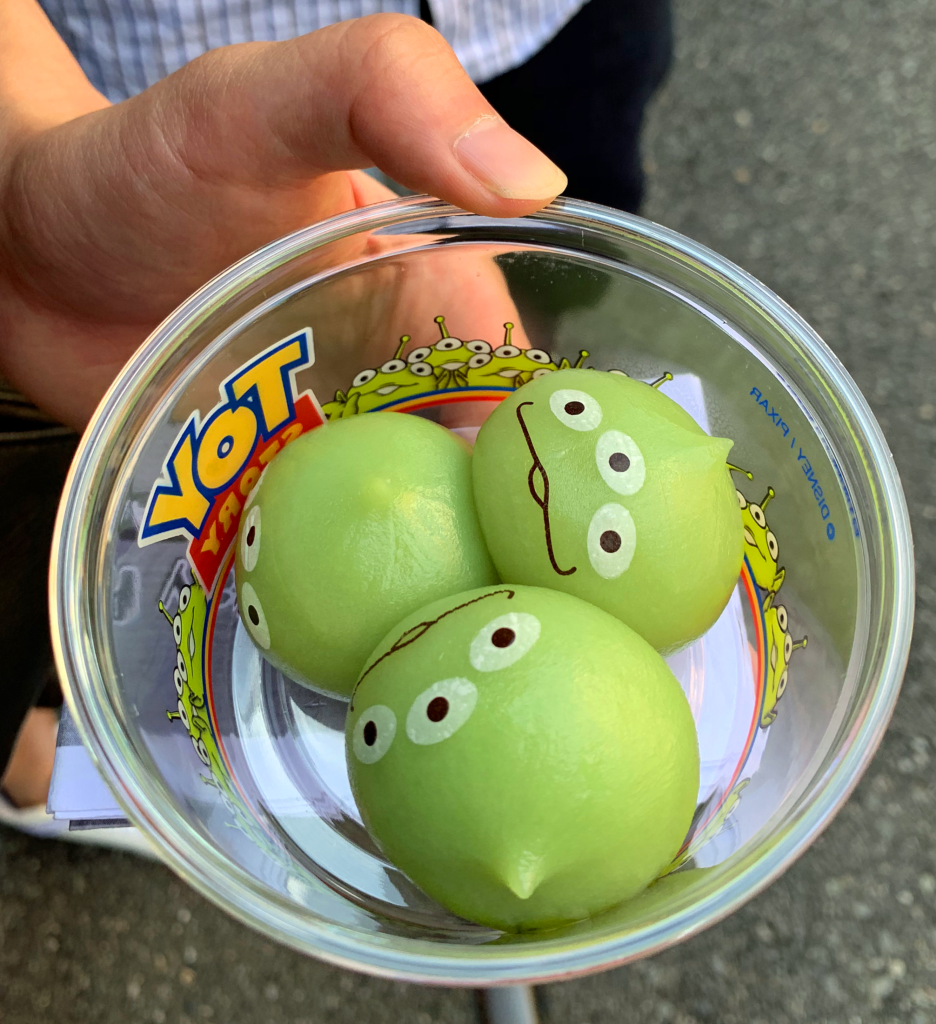
For world-building, when it succeeds in capturing the imagination, grounds guests firmly in the intoxication of the present moment. It inspires them to let down their guard, to shed the myriad plates of social armor that impede the expression of their truest, most tender selves. And that often, ultimately, means surpassing their former selves—exploring new things with a childlike sense of wonder that is moderated by a well-earned trust. It means—strangely enough—a sort of personal growth through consumption.
Not conspicuous consumption—mind you—which Disney does a rather good job of moderating within the boundaries of their world. Rather, the “Mickey Mouse factor” is the succulent fruit that grows from full-fledged immersion. In Disney World, everything is magical, so why wouldn’t the food be either? Would “Chef Mickey” ever serve you something subpar?
Aversions to certain foods, for good evolutionary reasons, remain particularly salient relative to our positive food experiences. And food neophobia—a refusal, perhaps even a fear, of eating new foods—is a natural part of childhood that, due to the proliferation of processed foods and development of bad habits, can extend well into adolescence and even early adulthood.

Chances are, many picky guests have been exposed to poorly-executed fare at previous restaurants or within the family home. Others may have come to fixate on an “ordinary” diet of chicken tenders, pizza, or pasta—highly-pleasing, undemanding, and convenient dishes that can reliably be found anywhere. Most parents, surely, will opt to feed their child their favorite things rather than spend each meal engaged in a kind of gustatory combat. And, short of achieving adequate nutrition, why should anyone—let alone children—necessarily care to draw enjoyment from the discovery of new cuisines?
Families enjoying a trip to Disney World surely do not intend to force their progeny to sample novel foodstuffs. Any such idea, you think, would be asking for a fight, a tantrum, a facsimile of the same battles being waged day in and day out back at home. Why ruin such a special trip? It’s a vacation after all, and that seems like a good enough reason to allow every manner of traditional comfort food to satiate kids’ palates. The food, no doubt, is simply just the fuel for a day filled with thrills.
But the “Mickey Mouse factor” reflects a curious occurrence. From the fallow soil of ingrained food habits/aversions—and the lack of any expectation, from parents, that Disney is the place where children will finally sample new flavors—something, miraculously, sprouts. The family is swept away on a magical adventure. They traverse all sorts of fantastic terrain, meet a cadre of beloved characters, and ride thrilling attractions.
When the time finally comes to pause and replenish ones’ bodies, the party—if cast, setting, and process did their jobs right—is aglow with a kind of Disney delirium. Everything expectation has been shattered, and a happiness has been achieved far beyond that of quotidian experiences back home.
So, even if a child is picky within confines of their school or their parents’ day-to-day cookery, why would it matter? That world has receded well into the background. The drudgery of daily life—of all that humanity loathes to do, and the many manners of curmudgery with which it copes—has, for a fleeting few days in Mickey’s bosom, disappeared.

The child who typically sees in any bite of unfamiliar food a kind of torture—a guaranteed disappointment—can only imagine sunshine and rainbows while in Disney’s thrall. Their best, bravest, most open-minded self is asserted while under the influence of hospitality perfection. For when a “show” is staged so well, even a minor slip—for, surely, some children do not enjoy the new food they have finally mustered up the courage to try—is quickly forgotten with the arrival of the next scene.
If you extricate the “Mickey Mouse factor” from its theme park setting and apply it towards dining writ large, the concept actually proves quite enlightening.
Can we not say the “Mickey Mouse factor” strongly influences the present American obsession with omakase? Diners—especially those new to the genre—take their seat at the bar and “entrust” the stoic itamae with conjuring a meal of their own creation. Novices and experts alike are drawn to the master’s den—less due to the allure of any particular bite, but rather the promise that whatever comes from their hand is sure to delight.
Though the sushi sycophants currently cluttering social media exhaustively document their every meal, the omakase form resists being frozen in time. Try as they might, conspicuous consumers can never bind an itamae to a set menu. Customers may come to expect certain totemic luxury ingredients like tuna, uni, and caviar to make an appearance. However, the finest details—and deepest delight—of the experience are altogether unknowable until they appear before you.
That might very well mean being served milt—the obfuscated term for fish sperm—or monkfish liver, two items that the everyday consumer would never deign order at their local all-you-can-eat maki establishment. Or maybe the chef simply has an exceptional piece—the cheeks or collar—of an exceptional fish to share. Perhaps, instead, they are ready to unveil some well-aged expression of seafood.
Diners do not know just what unfamiliar items may find their way before them at the bar. They do not have the luxury of reading “fish sperm” on a menu, of backing out before the crucial moment. The master enchants them, and they accept his gifts—their instinctual disgust, in this case, strangely subdued.
Yes, the luxurious setting may play its part. As might the flowing sake or the peer pressure from other, well-heeled patrons at the sushi bar. But, stripping these elements away, the “Mickey Mouse factor” is at work even more simply.
Paying for an omakase means indulging in a “one man show.” It all plays out before you—the myriad details of the meal shaped by countless, subtle gestures. All that work—all that ritual—amounts to a tiny piece of nigiri—not “fish sperm” in the abstract, but, rather, the crown jewel of a privileged performance.
And when the spotlight shines onto the guest—when all they must do is submit, accept, and keep the show rolling along—just who can resist? Who, upon witnessing the craftsman birth their creation, can deny them their bow? To refuse is to reject the chef themself, and—when they have already delighted you with a range of more ordinary items—a sense of open-mindedness is sure to reign. (To wit, can we not speak of an “Otto Phan factor” at work when guests visit Kyōten?)
A more orthodox restaurant serving a tasting menu—its kitchen sequestered somewhere out of sight—must work a bit harder to fashion this kind of “Mickey Mouse factor.” Such an establishment contends with many more diners staged at many more tables throughout a sprawling room. Patrons manage their expectations relative to the restaurant’s star rating and their dealings with the many intermediaries who enact the chef’s vision.
Without any master craftsman before them to command all the attention, diners in a traditional fine dining environment find the effects of “setting” and the greater range of “cast members” more salient. They find the “processes” that shape the flow of the meal far more important when they are hidden from view: one can easily forgive a chef who is slowly toiling before them, whereas the same delay—from a kitchen behind closed doors—reads as delinquency.
Though the famous chef’s reputation might have lured patrons in, the responsibility falls on the rest of the staff to be the standard bearers for his or her “brand identity.” Ideally, the food should be delicious—it should absolutely blow every customer away—and little “massaging” of the overall experience will be necessary. But what of the restaurant that looks to challenge its guests with some manner of experimental cuisine? How about those hallowed establishments that cook for global—rather than local—tastes and must negotiate some compromise between diverse genetic and cultural preferences?
Hospitality—in its superlative expression—does not only exist to “gild the lily” when indulging in hedonistic fare. Rather, its crucial role in the advancement of cuisine as “art” comes about by brokering an exchange of novel dishes from talented cooks to a skeptical, stubborn public.
What is the difference between a fine dining dish that reads as “thought-provoking” and one that is judged a “rip off”? It depends solely on how well the restaurant has realized the “Mickey Mouse factor.”
When service and setting are faultless—when the wine goes down easily and does so for a fair price—customers are happy to grapple with some strange new creation. Its pleasure may not be obvious, perhaps it’s a learned taste, but the dish’s unfamiliarity strikes guests as intended. It just one more expression of the same, “perfect,” experience. Thus, patrons will endeavor to understand and appreciate compositions that might confuse or provoke them on the surface. It’s all part of the plan—all corroborated by the many other pleasing details on offer—and any aversion rooted in a nonsensical fear or unrelated past experience shrinks in the shadow of such a good time.
This is why it pays so much for any given restaurant to possess a strong culture shaped and embodied by those at the very top. “Mickey” might not be in the kitchen on each and every evening, but “Minnie,” “Daffy,” Goofy,” and “Pluto” may very well weave the same magic for the guests.
And, when “Mickey” does happen to be leading the pass, guests become mere putty in “his” hands. For, in the age of the celebrity chef, every fine diner wants to catch a glimpse of the “master.” And, as in the omakase genre, their presence alone inspires the sense of wonder and trust so key to surpassing any skepticism or aversion.
Alinea, surely, wields the “Mickey Mouse factor” masterfully—its founders being, as you have described before, something of mascots themselves. Long before they make the trek to Lincoln Park, customers have already been sold—through Chef’s Table, Michelin,and social media—on Achatz “the magician.” Guests have paid for their tickets in advance, and they arrive ready to strap themselves in for a wild culinary ride.
But, as dish after dish arrives that they can make neither heads nor tails of, the mask begins to slip. The self-assured, pretentious Alinea service culture—portrayed as the corollary to the kitchen’s finely tuned cookery—comes across as cold. Wine pairings of dubious value—along with a lack of warmth and flexibility at a structural level—work to reveal that the mustachioed “Mickey” has no clothes!
Guests often leave unsatisfied. But the “Mickey Mouse factor” is not so much about enjoying new foods as it is mustering up the courage to sample them in the first place. Alinea, in that respect, surely succeeds in pushing patrons’ boundaries. They serve dishes that, truth be told, no diner has likely ever tried before.
Nonetheless, the “Mickey Mouse factor” really matters most when it helps diners overcome superficial phobias. Its real currency comes from introducing people to flavors they had overlooked up until that point and that might, moving forward, lead them towards greater gustatory pleasure or better health.
Alinea—content catering to an endless stream of feckless, first-time visitors—simply sees no need to gratify guests. Achatz no longer tries to impress or educate his patrons but simply teases them. His customers leave the restaurant having sat through an interesting “experience” but, at the same time, having learned very little about fine food they can take forward into their everyday lives. The only doors a meal at Alinea opens are trap doors, pitfalls in which people pay big bucks for victuals that reject the very essence of enjoyment.
Alinea cows its customers into an expensive evening of “dinner theatre”—and is so adept at tickling their insecurities that patrons will go on to perpetuate the undeserved reputation of an experience they did not actually enjoy. Call it “evil genius” if you must—but it’s still genius!
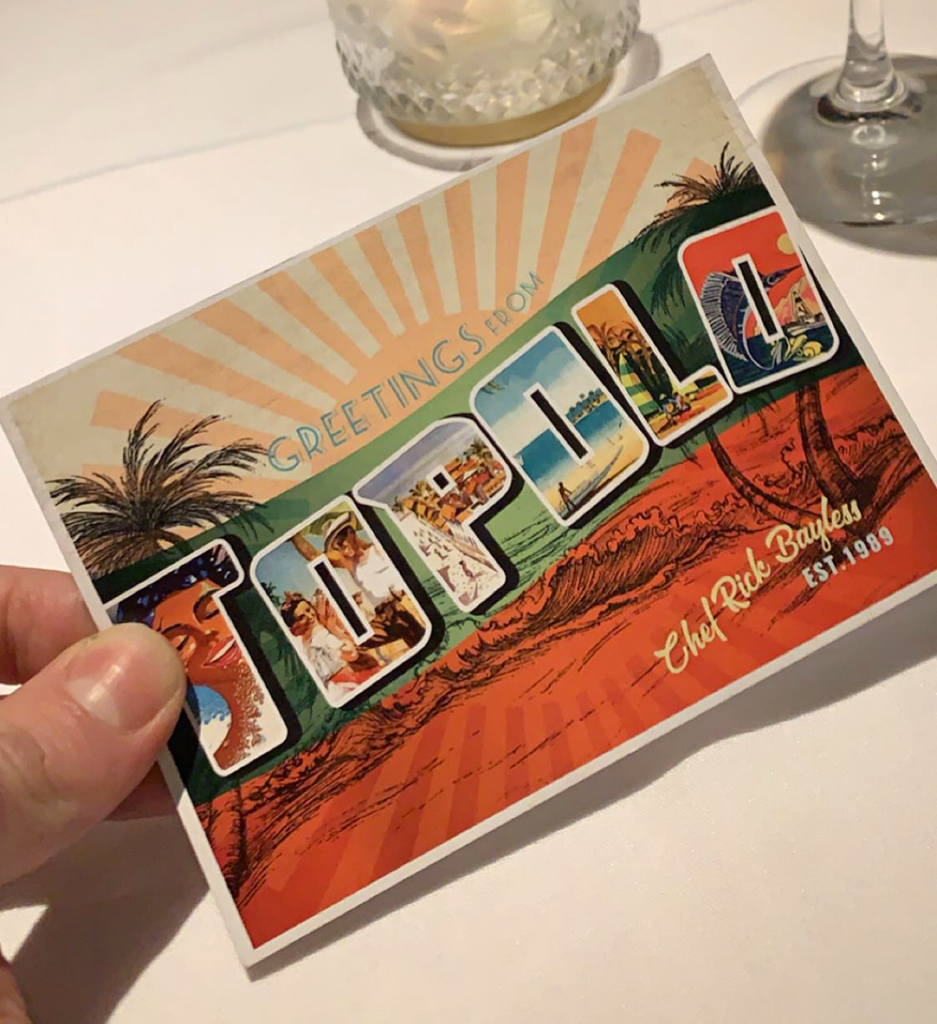
Surely, Chicago’s favorite airport and supermarket aisle impresario Rick Bayless knows very well how to channel the “Mickey Mouse factor.” His entire brand—built through decades of cookbooks and appearances on PBS—has sought to educate Americans in the rich culture of their neighbor south of the border. While some faction of Bayless’s fans engage deeply in replicating his recipes—if not retracing his steps across Mexico altogether—the beauty of the “Frontera” name is expressed primarily through consumer trust.
Some segment of patrons—and this was especially true back in 1987—enter Frontera Grill without the slightest knowledge of traditional Mexican cuisine. They might have some experience with the Taco Bells and Chipotles of the world. Perhaps they even had an unfortunate outing at a supposedly “authentic” neighborhood joint of theirs. But Bayless, as “Mickey,” succeeds in banishing any past memories of underwhelming fare. His life—his own, in depth, study of Mexican cuisine—inspires the ultimate sense of trust one needs to revisit a disappointing dish. And, when you give “Rick” and his talented team that shot, you can be sure they will not miss.
The same goes for Topolobampo—which opened, just as boldly, in 1989. At a time when the average American had a long way to go towards appreciating faithful representations of Mexican cuisine, just how many could conceive of “Mexican fine dining”? Just how many would dish out the money for a tasting menu oriented around forms and flavors that had never, in their minds, been worthy of such a treatment before?
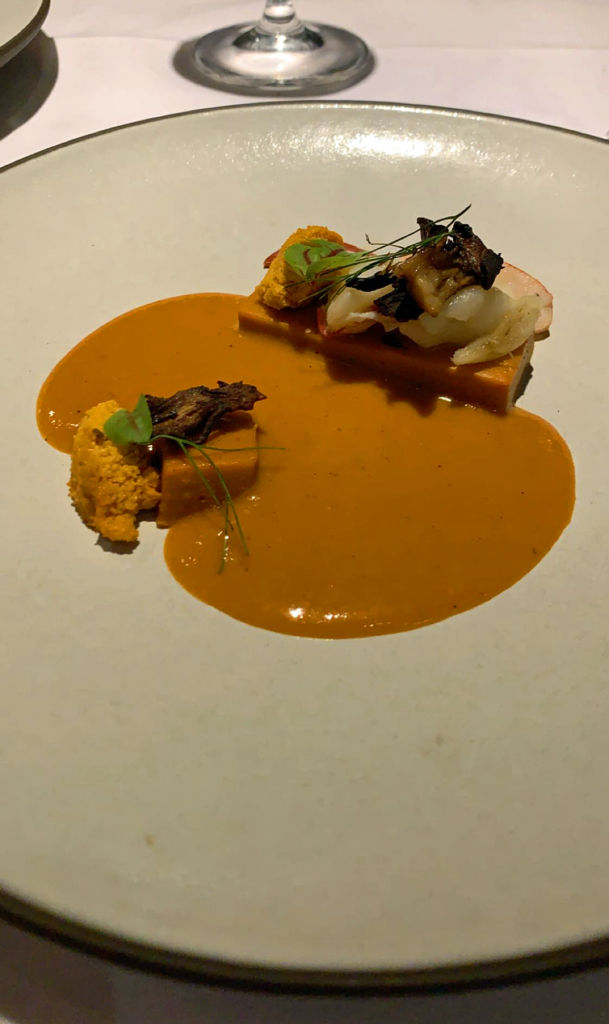
Yet Bayless’s body of work—and the high standard set within his restaurants—carried the day. The chef cultivated a level of trust with customers that, Mexican and Mexican American restaurateurs of his generation, for better or worse, proved unable to. One can certainly choose to inject a poisonous racial narrative into that story, but it stands to reason that any given native population looks, first, to translators of foreign culture before seeking it—so to speak—from the “source.”
The next generation of excellent Mexican restaurants in Chicago—like Tzuco and Mi Tocaya Antojería—owe something to Bayless’s success in making a wider swath of the city appreciate the cuisine. Of course, what a Carlos Gaytán or a Diana Dávila have to communicate through Mexican cuisine—being rooted in their own lived experience of the culture—will always yield a superior artistic expression than what the “outsider” might offer a tradition. Yet Bayless’s codification—again, in both a literal and figurative sense, a “translation”—of the cuisine formed the first step.
Without expectation and without judgment, the chef babied a stubborn population into expanding their palates. One can wring their hands about the scourge of “xenophobia,” but such an instinct is an evolutionary reality. The most backwards eaters in any given country see very little need to expand their horizons. They are comfortable with their lot and admirably secure in their status away and apart from anything “trendy.” Reaching such citizens demands speaking a different language, it means setting the stage in such a way as to defuse rejection and aversion before they think to rear their heads.
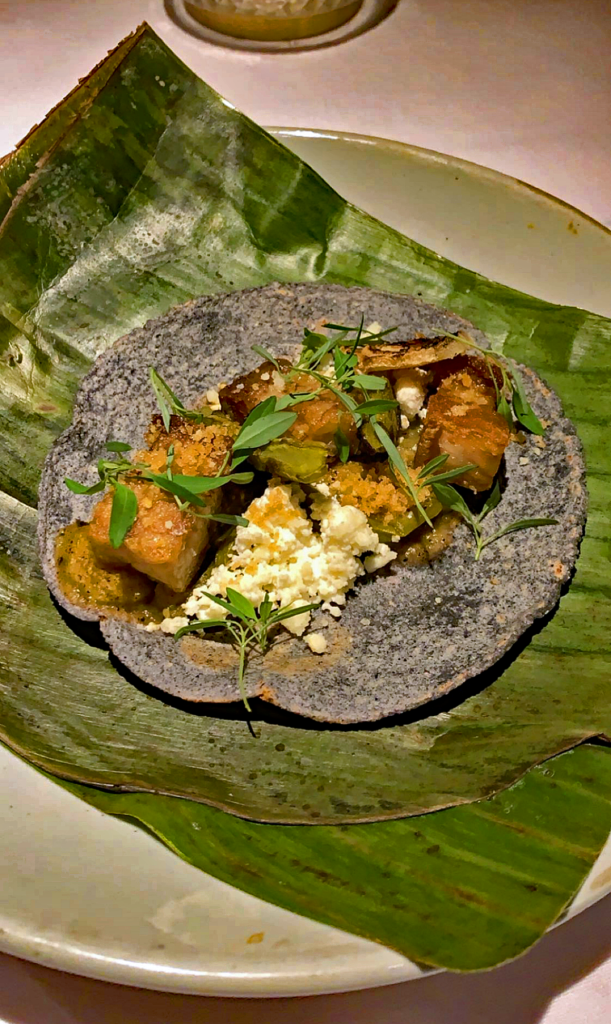
It’s degrading work for those who feel a natural pride in what their ancestral culture has to offer their countrymen—all the more when any aspect of the experience must be diluted to suit narrow tastes. But the goal, as Bayless and Disney both know so well, is conjuring happiness. And any culture, any recipe, setting, and service process should be set towards that goal. Anything less, and you are just asking your neighbor to come and worship your culture your way at the altar of “authenticity.” You are not “sharing,” but, rather, demanding supplication. And, while a certain oversocialized segment of the population hates themselves enough to grovel in such a way, other parts will turn their backs on their pushy new neighbors and never think to give their cultural riches a chance. Bayless as figurehead and mascot (of, ironically, a majority Mexican and Mexican American team) smooths the whole exchange.
For the term “Frontera,” whatever form—from restaurants to packaged goods—it may take, communicates that customers are purchasing a product that pays respect to Mexican culinary tradition while remaining legible to Americans who lack firsthand knowledge of those cultural forms. “Frontera” means “Rick Bayless,” and the “Rick Bayless factor” ensures that those patrons who are most skeptical regarding the heat, spice, or content of the cuisine are in good hands. They know they are getting one of the best examples of the craft delivered via faultless customer service in an attractive environment. With such a combination—“setting,” “cast,” and “process”—in place, the stage is set for foolhardy aversions to suddenly, joyously disappear.
Can we also not speak of a “Rich Melman factor” when entering any of Lettuce Entertain You’s establishments? Surely, the charm of R.J. Grunts’s original salad bar—not to mention the trust involved in eating from such an installation—paid dividends when the restaurant group went on to open Everest or Tru. Chicagoans back then might not have known what to make of such highbrow concepts (now, perhaps, even less so), but they knew what Melman and LEYE stood for. They knew the company would not put its name on anything awful—or, at the very least, that any problems would be remedied with care.
Thus, in such a manner, Melman and his partners were able to build a solid base of customers who would venture to try any and every concept due to the guarantee embodied by the restaurant group’s logo. The cuisine or price point of a given establishment—under LEYE’s banner—matters little when guests can expect the staff will routinely venture above and beyond to satisfy any request. They are assured a good time—irrespective of any particulars regarding the food—which, as luck would have it, is the perfect place from which patrons might dare sample new things.

Is there not an “Iliana Regan factor” at play when eating foraged foods at Elizabeth—or, better yet, staying at the Milkweed Inn in Michigan’s Upper Peninsula with the chef and her wife? Regan, now a bestselling author to boot, has run the most humble of all the city’s Michelin-starred establishments for nearly a decade now. Yet Elizabeth’s diminutive digs have long belied a restaurant with a powerful, pervasive sense of soul.
Every member of Regan’s team—by expressing, through service, some genuine piece of themselves—sets the tiny space alight with a character that simply cannot be bought, no matter how luxe the dining room. Can it be any surprise when the chef herself has never hesitated to lead from the front—bussing guests tables with a nonchalance that can only come from some supreme sense of purpose, an unwavering dedication to the craft of hospitality rooted in something well beyond the conceit of celebrity chef-dom.
When Regan says she plans to stay in Michigan running her inn throughout the summer and that “Elizabeth will be fine” in the care of her chef de cuisine and general manager, it rings true. When guests at the restaurant are served intricate compositions featuring rabbit or quail egg, they do not fret. What, in a soulless luxury setting, might read as a fussy or meager menu instead resonates with a sincere, homespun charm. The sense that Regan and her team are a cohesive entity—kindred spirits in pursuit of guests’ pleasure—allow any of the individual “parts” to speak for the whole.
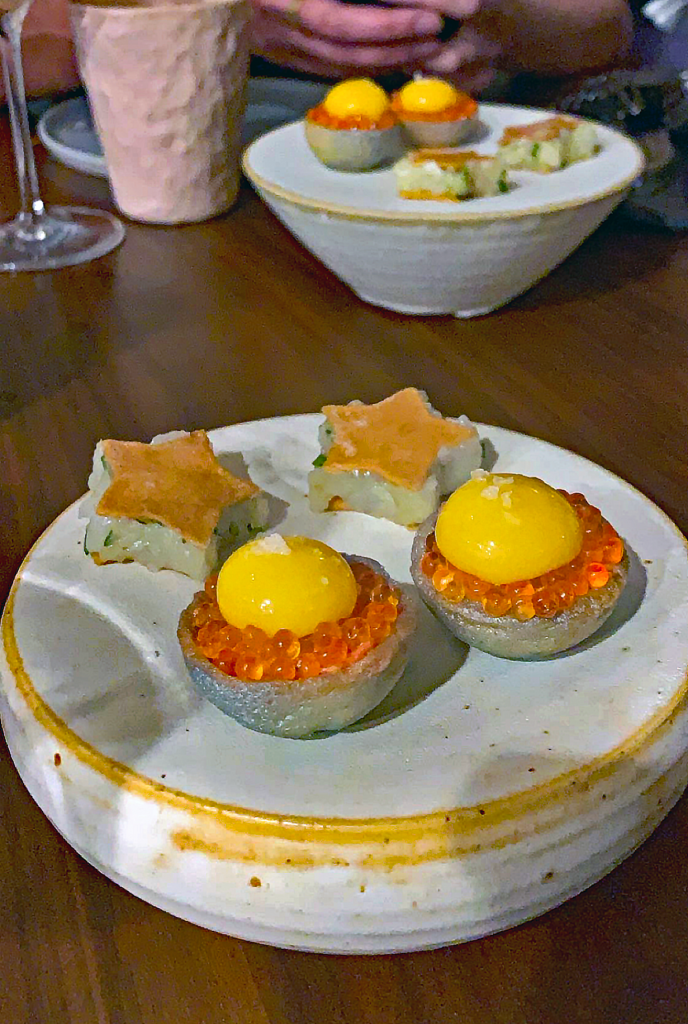
And, while Elizabeth’s dining room is small enough to instantly know whether or not Regan is in the house, such a detail never matters. The restaurant’s culture retains the force of the chef’s personality, and the food—long among the most intellectual and challenging fare in all of Chicago—never fails to be warmly embraced due to the earnestness of Regan’s acolytes.
Regan’s fingerprints can always be sensed, irrespective of her presence, and the manner in which the chef carries herself always serves to orient the restaurant’s sense of hospitality. It all makes Alinea’s frippery—at four, five, or six times the price—feel hollow. For Achatz foists new foods upon his captive audience via a false sense of luxury that exploits feelings of intellectual or cultural insecurity. Elizabeth, in contrast, soothes guests into sampling novel dishes with a sense of place. It’s the only strategy the restaurant’s means allow, and Regan succeeds in educating diners far beyond anything Alinea’s “new train of thought” has achieved in more than a decade.
The “Mickey Mouse factor” demands a leader that matches the caliber of that famous rodent. Or, at the very least, it must tap some lasting fountainhead from which a restaurant’s culture springs. In Alinea’s case, customer enjoyment was sold down the river long ago in favor of constant reinvention. Their gastronomic “shock and awe” may keep people coming through the door—may keep the social media buzzards swarming—but imparts no lasting happiness. Patrons there are not inspired to overcome their fears and reach beyond their comfort zone. Rather, they are prodded into sampling Achatz’s latest science experience lest they waste the cost of the ticket or expose themselves to be the sort of uncouth savage who seeks pleasure from food.
Take, as another example, that favorite of yours: Smyth. John Shields is less a Mickey Mouse than a full-blown Walt Disney. The “factor,” established so well at Smyth, embraces a kind of culinary storytelling that stands apart from purely hedonistic pleasure. Yes, the food, more often than not, is among the most pleasing in the country. But careful sourcing and the expression of local and regional terroir take precedence. Diners are invited to sample a fleeting moment in time, to get in touch with nature’s bounty, and the success of such an experience has little to do with whether Shields is in the building or not.
For Smyth’s experimental cuisine is tempered by an absolute dedication to the guest experience. While Alinea’s audience bolts out the door after dinner to find real sustenance, Shields is happy to bring Chicago’s favorite cheeseburger upstairs. It is no affront to his ego—no contrived attempt to gild the lily—but only an expression of a chef who uses all the forces at his command to please the souls who have entrusted their evening to his care. Finding such inspiration at the very top—corroborated by Karen Urie Shields and one of the best general managers in the entire business—is it any wonder that Smyth lays claim to Chicago’s most talented team?
Night in and night out, regardless of which senior members of the front or back of house staff are in attendance, Smyth delivers the kind of superlative, transcendent hospitality that can only be rooted in an ironclad identity. The team expresses terroir, the season, and something of themselves—not for the sake of expression, but in pursuit of showing guests the perfect evening. One feels that solemn pledge, that dedication, in every interaction.
It sure helps that Smyth’s food ranks as the most delicious in Chicago, but the range of fermented, preserved, and foraged ingredients offered throughout their menus surely stands apart from other restaurants. No doubt, some of it sounds jarring on paper. Yet patrons are easily lulled into sampling every morsel. For there is no doubt—one way or another—they will leave well fed. Moreover (and this is the magic that makes Smyth such a standard-bearer of the “Mickey Mouse factor”), guests feel they are being served by intimate friends.
Friends would never serve you something faulty, and—if it ever did happen—there could be no doubt as to the proper recourse. John Shields shines as Chicago’s most talented, forward-thinking chef because he makes clear that culinary experimentation will never stand in the way of delivering pleasure. In doing so, he convinces his customers to embrace an exploration of novel flavors and textures without any fear. Shields and his team offer excitement and comfort in equal measure, a creative yin-and-yang that achieves the rare, all-encompassing satisfaction that only experts like Disney typically attain.
To come full circle, just what can the “Mickey Mouse factor” teach us about fine dining?
The concept, in its essence, refers to children—but what are all incipient fine diners if not children in the realm of cultivating good taste? Each brings a personal history—the baggage of nostalgia and aversions alike—to the table, and each—depending on the caprices of their mood at the moment—decides how much of that detritus can be cleared for the sake of experiencing something new.
Disney theme parks enact hospitality on a scale that makes even the most renowned three Michelin star restaurant look like child’s play. Can it be any other way when Disney World alone comprises more than 400 food service locations and 90 full-service restaurants? From the moment you enter his sanctum, Mickey commands unmatched resources towards ensuring your good time. “Cast,” “setting,” and “process” ensure—beyond any shadow of a doubt—that customers are charmed long before they find their way to the dinner table. To the awe-struck child, trying something new—or overcoming an aversion towards something they tried but once—becomes as easy as riding a new attraction.
Whether any discrete experience—a particular ride or bite of food—is good or bad gets lost among an overwhelming torrent of positive emotion. At Disney, there is always something more to come, and it is perfectly fine to pick one’s favorite experiences while discarding others. Shaping one’s preferences is part of the fun—moderating only by one’s willingness to give the widest array of options a fair shot. Food fits into this ceaseless, secure sense of revelry—and thus the “Mickey Mouse factor” works magic at expanding palates in a manner many parents could only dream of.
Restaurants, quite obviously, possess far fewer resources to marshal in their bid to mollify customers. The vast majority of establishments, of course, endeavor merely to offer dishes that are straightforward in their pleasure. “Novel” dishes served at the neighborhood grill or traditional ethnic restaurant—what you might call “specials”—are designed to appeal to a smaller segment of adventurous eaters. They form the cherry on top of a dependable menu whose quality, often, will be judged by the consistency with which the same fare is always made.
It is primarily in the realm of fine dining that the tendency towards novel compositions becomes something of the norm. At that higher price point, chefs—unless they distinctly embrace and bind themselves to a particular, canonical tradition—cannot get by crafting quotidian dishes. Rather, they are looked to as storytellers, visionaries, or translators of this or that culture in this or that way.
Fine dining restaurants occupy a price category well beyond any notion of “value” as it regards achieving basic sustenance. Their business is one that goes beyond simply filling stomachs. Rather, it is a creative expression—an endeavor to fill guests with wonder, to spur “happiness” and delight, through food. In this category, a given restaurant competes for eyeballs, media relevance, and awards with a host of other “luxury” properties. Thus, beyond competence and consistency, they must find a way to distinguish themselves even within the rarefied world of high-end cookery.
To that end, just how much can a given chef experiment?
Some customers will visit their establishment seeking pleasure. They expect the value of an expensive tasting menu to correspond, somewhat, to the average restaurant meal. Or, you should say, they expect the satisfaction derived from that $250 per person splurge to be drastically more than the $50 per person “date night” they might usually go on each week.
Does a chef play it safe, trotting out totemic luxury ingredients like caviar, crab, lobster, truffle, foie gras, and wagyu? Surely, these offer some of the finest flavors known to man. But the ingredients tie chefs’ hands as often as they empower creativity. For the urge strikes to showcase such totemic treasures in a rather precious way, as if to say “look over here at what your money is going towards!”
This bit of prestidigitation ensures inexperienced guests feel they got some value from the ticket price. Whether or not they enjoyed or understood the evening’s dishes, the appropriate boxes have been ticked. They can gab to their friends or post on social media about the range of decadent ingredients they got to try, despite having gleaned little regarding their essence.
Without regard to totemic luxury ingredients specifically, a given fine dining chef might simply feel they “must” complete the tasting menu with some manner of steak dish. Or they “must” offer a bread basket or pasta course to help pad guests’ stomachs. Dessert just “has to” feature chocolate in some form. And, very quickly, what should have been the kitchen’s distinct, singular vision crumbles into a kind of cookery concerned only with pleasing the lowest common denominator.
And you think there is nothing wrong with broad appeal. Certainly, plenty of chefs err on the side of pretension instead. But there is no need for any fine dining restaurants to exist if they only look to mirror each other in a race to the bottom of mass market conspicuous consumption.
What makes the “Mickey Mouse factor” so salient for fine dining is that it reveals the mechanism through which guests can withstand sampling novel foods and even weather dishes they do not like. Chefs need not work backwards from a given menu price in an insecure bid to build an obvious sense of value.
Customers choose a given fine dining restaurant for its distinction relative to all others. Chefs should embrace that sense of character rather than trying to be everything to everyone. They should aspire to impress with the full glory of their vision rather than aim merely to avoid failure or simply secure a positive, superficial social media post.
For it is that vision—like Disney’s own—that inspires a captivating “setting” (the dining room) and a team of “cast members” (front and back of house). That vision—centered on something more than perceived “value”—allows for “processes” within the restaurant that put the overall guest experience at the forefront.
With these foundations in place, the tasting menu need not cynically do the bare minimum to satisfy the greatest number of people. Rather, the restaurant’s cuisine can naturally tell the chef’s story. It can please, provoke, tickle, and delight in equal measure. It can use any ingredient in any way and structure its courses in any order.
Such a menu should not be disconnected from guest enjoyment but, instead, understands that such enjoyment transcends the food. The confident chef is unafraid of the fact that they may not hit a “home run” with each dish, for ever doing so would demand so much fine-tuning that the kitchen would descend into a creative standstill.
Guests arrive at a Michelin-starred restaurant—much like Disney World—to dream. And dreams are not just filled with splendor. They have their curious, confusing, mind-bending moments as well. The pressure to please every patron with every dish at every moment can only be undone by a comprehensive experience.
When staff, setting, wine service, tone, and flow are all oriented towards ensuring guests’ good time, the chef is given room to dream. They can invite diners to enter the full wonder of their world, confident that even those who do not understand everything they see will be more than pleased in the aggregate.
Under such a paradigm, a tasting menu can really become a work of art: an experience of nature, culture, or abstraction that has achieved a total disconnect from commercial concerns. Any and every aversion—short of a deathly allergy—dissolves in the beauty of the present moment. New loves are discovered, old ones rekindled, but the diner’s concern becomes one of childlike discovery rather than perceived value.
The “Mickey Mouse factor” stands as a key example of the transformative power of hospitality. For what Mickey achieves with picky kids’ palates within the boundaries of Epcot can be enacted in any dining room anywhere. Restaurants need only privilege the creative energy of their team, channel it ceaselessly towards the customer experience, and allow food to stretch its wings as something more than mere fuel.
The goal never could nor should be to avoid any incidence of distaste. Accounting for that, ultimately, would mean denying every diner an appreciation of the chef’s full palette of tastes and textures for the sake of the most backwards among us.
The goal for great chefs can only ever be to keep charging onward towards new combinations, greater refinement, and more striking fidelity to their source of inspiration. Though catering to the pathetic proclivities of social media influencers offers ample rewards for restaurants willing to debase themselves, such chefs are forsaking their craft.
The harder—but more rewarding and eternal—challenge is to shape their own “Mickey Mouse factor.” That task demands the best of a chef’s leadership, the denial of their ego, and the cultivation of a loyal and valued crew. It demands that the restaurant reclaim its ancient place as a multifaceted restorer of men’s souls across domains physical, emotional, and spiritual.
For great restaurants do have souls too, and it is only by entering into such a communion that a mere meal becomes imbued with the power to transform.

